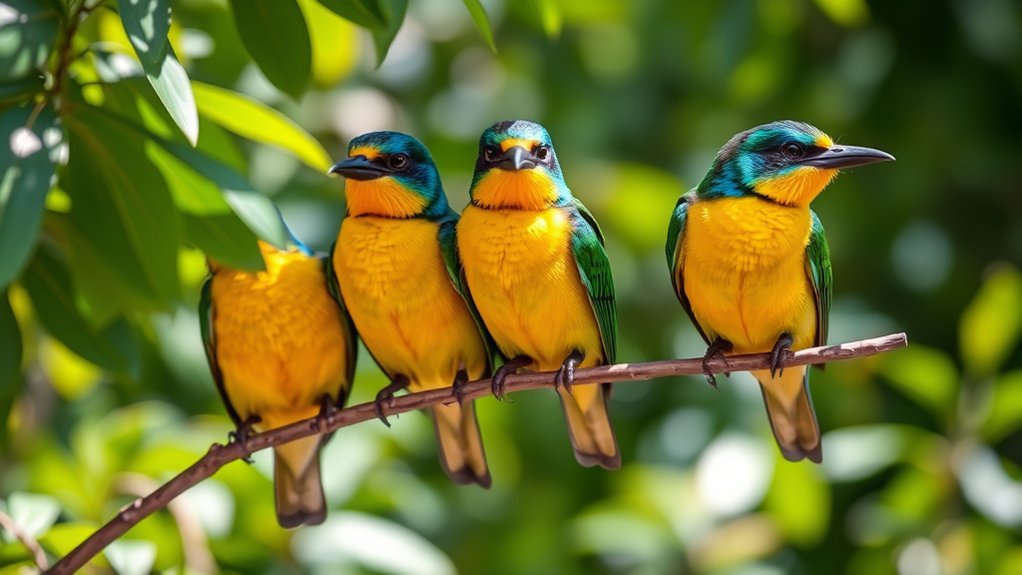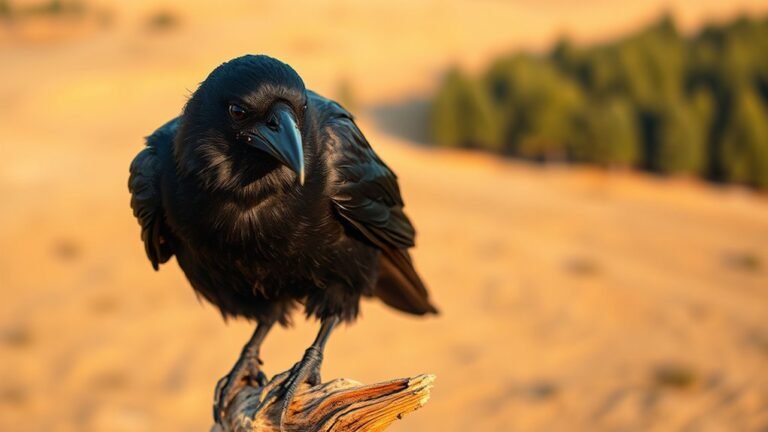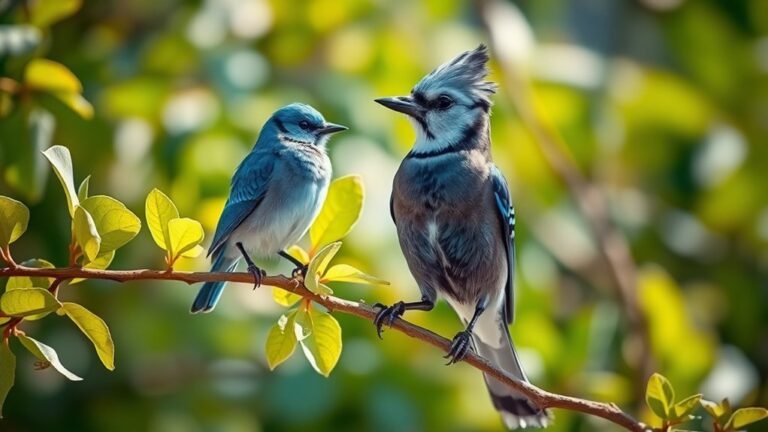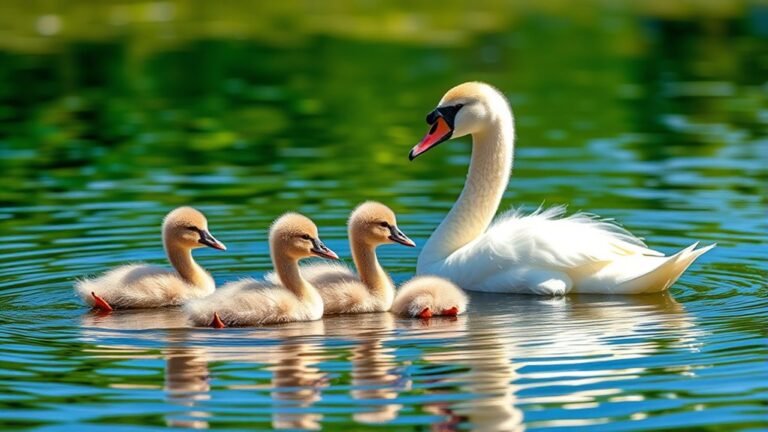Birds With Yellow Bellies: Identification Tips
When you go birdwatching, finding birds with yellow bellies can be fun but tricky. Each type of bird has its own colors and behaviors that help you tell them apart. Look closely at their shape, listen to their songs, and pay attention to where they live. Knowing these details will help you identify them better.
To get ready for your next birdwatching trip, here are some tips:
- Bring binoculars. This will help you see better from a distance.
- Watch their movements. Some birds may hop around, while others might just sit still.
- Listen to their sounds. Birds sing differently, and you may notice patterns.
- Keep a notebook. Write down what you see. This can help you remember later.
With these simple steps, you'll be more prepared to spot those colorful birds. Happy birdwatching!
A Quick Overview
- Look closely at the yellow belly of the bird. The brightness can help you tell different types of birds apart.
- Check for unique marks, like masks or patterns, which can help you identify the bird.
- Remember that male birds sometimes change their colors with the seasons. They often look brighter during mating season.
- Use birdwatching apps or guides. They can help you identify birds quickly based on what you see.
- Pay attention to where the birds like to live. Some prefer wetlands, while others like meadows.
Understanding Bird Coloration

Bird color is very interesting! It tells us a lot about how birds live and behave. Bright colors can help birds communicate with each other and attract mates. For example, a male bird with bright colors often looks healthier, which makes it more appealing to females. This can lead to more babies.
Some birds have colors that help them hide in their environment. This camouflage is important for staying safe from predators. By blending in, they can avoid being seen.
Learning about bird colors helps us enjoy nature more. It also shows us how birds fit into their ecosystems. Each color has a purpose, making the study of birds even more exciting!
Common Characteristics of Yellow-Bellied Birds

Many birds have bright colors, but yellow-bellied birds have special traits that make them stand out. Their yellow bellies shine brightly against darker feathers, which makes them easy to spot. They often have a compact body shape that helps them fly quickly and gracefully.
These birds also have lovely songs, which adds to their charm. When you hear them sing, you might feel a special connection to nature. Seeing these beautiful birds can really brighten up a natural setting.
Here are some fun facts about yellow-bellied birds:
- Their bright yellow underparts catch your eye.
- The contrast in their feather patterns is impressive.
- Their songs bring joy to anyone listening.
- Their presence makes nature feel more alive.
- Watching them helps us appreciate the beauty of nature.
Learning about yellow-bellied birds can help you enjoy watching them even more. They're amazing creatures that add fun and excitement to our lives.
Top Yellow-Bellied Bird Species to Look For
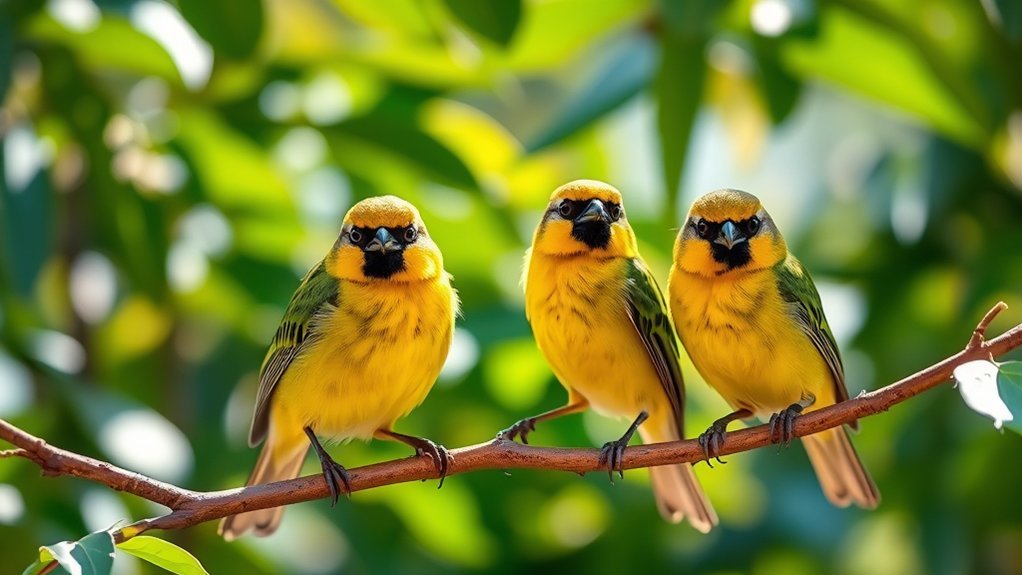
Many yellow-bellied birds live in different places. Each one has special features that make them fun to watch.
One interesting bird is the Common Yellowthroat. It has a bright yellow belly and a cool black mask on its face. If you're looking for warblers, listen carefully for their cheerful sounds and watch their playful movements.
Another popular bird is the American Goldfinch. This bird is loved by birdwatchers. It shows off a brilliant yellow belly, especially in the spring and summer when it's nesting. Watching finches is joyful because they often fly around in lively groups.
You might also spot the Eastern Meadowlark. This bird sings a beautiful song and has a lovely yellow belly that contrasts with its brown back.
Each of these yellow-bellied birds can help you appreciate the beauty of nature in your area. So grab your binoculars and keep an eye out for these amazing birds!
Distinctive Features to Observe
When you watch yellow-bellied birds, look for some special features that make them unique.
These birds have cool traits that help them survive and play an important part in nature. Here are some things to check out:
- Their bellies are bright yellow, which shows they're healthy.
- They've different colors and patterns, which can tell you what kind of bird they're and if they're male or female.
- You might see streaks or spots on them that give clues about their behavior.
- The shape and size of their beaks can tell you what they like to eat.
- Their wings and tails have different colors, showing how they adapt to their environment.
Seeing these color patterns helps us understand their role in nature.
Plus, it can connect you with other birdwatchers who enjoy this hobby too.
Happy birdwatching!
Seasonal Variations and Plumage Changes
As the seasons change, you can see amazing changes in the feathers of yellow-bellied birds. These changes help the birds adapt to their different habitats and breeding cycles.
In spring, male birds show off bright, colorful feathers to attract mates. Females often wear duller colors to stay safe while nesting.
When winter comes, many birds switch to earth-toned feathers. These colors help them blend in with the surroundings and hide from predators.
Watching these changes not only helps you learn more about birds, but it also makes birdwatching even more exciting! By paying attention to these beautiful shifts, you can connect with nature and enjoy the wonderful variety of yellow-bellied birds throughout the year.
Habitats Where Yellow-Bellied Birds Thrive
Yellow-bellied birds like to live in places where they can find lots of food and safe spots to build their nests. You can often see them in green wetlands and along the edges of forests. These areas have both water and trees, which means plenty of food and shelter for these birds.
In these lively environments, you can hear the peaceful sounds of croaking frogs and the rustling of leaves. You'll find sunny spots filled with beautiful wildflowers.
Wetlands come alive with vibrant animal life at dawn, making it a great time for birdwatching. Plus, being in nature can help you feel connected to the world around you.
These special places help yellow-bellied birds show off their unique colors and sounds. Exploring these habitats lets you enjoy nature's magic.
Behavioral Traits to Notice
Yellow-bellied birds show interesting behaviors that highlight how smart and adaptable they are. You can see their bright courtship displays, which include dancing and singing to attract mates. This helps them find partners and claim their space.
When it comes to eating, these birds are very clever. They often search for food in groups. Foraging together helps them gather food more quickly and keeps them safe from danger.
Watching how they interact, whether they're playing or showing aggression, gives you a glimpse into their social lives. Each of their actions teaches us about their survival and their important role in nature.
Connecting with these colorful birds can deepen your appreciation for the environment around you.
Birdwatching Tools and Resources
Birdwatching is a fun and rewarding hobby. Having the right tools can make it even better. Here are some tips to help you enjoy watching yellow-bellied birds and their cool behaviors.
First, get a good pair of binoculars. They should be light and give you a clear view. This way, you can see the tiny details of the birds.
Next, try using birdwatching apps. These apps can help you learn about different birds and how to identify them easily. A notebook is also a great idea. You can write down what birds you see and your thoughts. This helps you connect more with nature.
Here are some more helpful items to bring along:
- A sturdy field guide to help you find and recognize birds quickly.
- A comfy chair for sitting and observing longer.
- A camera to take pictures of the birds you see.
- A jacket that fits the weather, so you're always comfortable.
- A friend to join you on your birdwatching adventures!
With these tools, you'll have a great time birdwatching. Enjoy observing these wonderful creatures!
Techniques for Spotting Yellow-Bellied Birds
Spotting yellow-bellied birds can be a fun adventure! To find them, look in places where they like to hang out, such as wetlands, meadows, and woodlands.
Here are some easy tips to help you spot these colorful birds:
- Watch for Movement: Look closely at the tree lines. If you see a quick movement or a flash of yellow, pay attention!
- Listen Closely: Many yellow-bellied birds have special calls. If you hear a sing-song sound, it could be a sign they're nearby.
- Timing is Key: The best times to look for these birds are early in the morning or late in the evening when they're most active.
- Stay Still and Quiet: If you stand still and keep noise to a minimum, the birds might feel safe enough to come out in the open.
- Watch Their Behavior: Different birds have unique ways of feeding. Watching how they look for food can help you identify them.
Photography Tips for Capturing Yellow-Bellied Birds
Capturing yellow-bellied birds can be a fun and rewarding experience. These bright birds are beautiful, and taking photos can help you appreciate them even more.
Here are some easy tips to help you take great pictures of these colorful creatures:
- Use a fast shutter speed. This will help you catch their quick movements without blur.
- Adjust your aperture. A wider opening will blur the background, making the bird stand out.
- Shoot during golden hours. Early morning or late afternoon gives you soft, warm light that looks nice.
- Be patient. Sit quietly, and let the birds come to you. This way, you can capture real moments.
- Try different angles. Moving around can show off the bird's special features in unique ways.
These tips can help you connect with nature and enjoy wildlife photography.
Conservation Efforts for Yellow-Bellied Bird Species
Many people love the bright colors of yellow-bellied birds, but these birds need our help to survive. You can play a big part in keeping them safe by supporting efforts that protect their homes.
By speaking up for wetlands, forests, and grasslands, you help make sure these birds have places to nest and find food. Joining monitoring programs lets you share important information about how many yellow-bellied birds are out there and how they behave. This data helps guide conservation plans.
You can also join local bird groups or citizen science projects. These activities help you connect with these beautiful birds while making a real difference in their lives.
Together, we can help yellow-bellied birds thrive!
Frequently Asked Questions
What Attracts Yellow-Bellied Birds to Specific Feeders?
Yellow-bellied birds like specific feeders because of the seeds they enjoy. If you want to attract these birds, use platform feeders with sunflower seeds. You can also try tube feeders filled with nyjer seeds. These options make it more likely for yellow-bellied birds to visit your yard.
Make sure to keep the feeders clean and refill the seeds often. This helps keep the birds coming back for more. Sit back and enjoy watching as they flock to your feeders!
Are There Yellow-Bellied Birds That Can Be Found Year-Round?
Yes, you can find yellow-bellied warblers in your area all year long. These birds have bright colors and lovely songs, making them a fun sight and sound in your local parks and backyards. You can enjoy watching them during any season!
How Do Yellow-Bellied Birds Communicate With Each Other?
Yellow-bellied birds use different sounds to talk to each other. They make sweet melodies and sharp chirps. These sounds help them build friendships and show other birds where they live. This communication is really important for their safety and daily life. Watching how they interact is fun and interesting!
What Predators Pose a Threat to Yellow-Bellied Birds?
Yellow-bellied birds have to watch out for some pretty scary predators. Hawks and snakes are two of the biggest threats to them. Besides these hunters, yellow-bellied birds are also dealing with problems from losing their homes.
If their environment isn't safe and friendly, it gets harder for them to survive. The combination of predators and a safe place is really important for these birds to live and thrive.
Can Yellow-Bellied Birds Hybridize With Other Species?
Yes, yellow-bellied birds can mix and have babies with other bird types. But this can lead to problems. Different birds have their own ways of mating. If the mating habits don't match, the babies might not survive or do well in their environment. This can change how bird populations grow. Learning about these things can make watching birds even more interesting!

Luna is the passionate founder and author of Birds and You, a website dedicated to sharing her love for birds with fellow enthusiasts. Through her engaging articles and guides, she aims to educate and inspire others to explore the fascinating world of birds. When she’s not writing, you can find Luna observing birds in their natural habitats or sharing beautiful bird photography on Pinterest. Join her on this journey to celebrate and protect our feathered friends!

